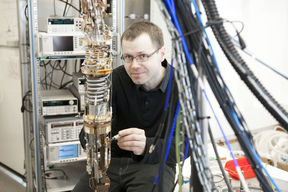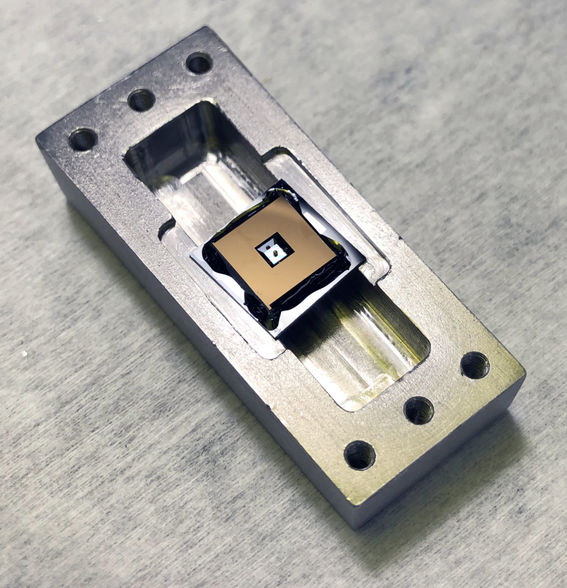Hard work and glorious moments
Sillanpää and his research team are also ready to experiment with elements other than gold. For example, osmium is a very dense but rare element that, as a superconductor, is suitable for minimising electrical energy losses, since there are no electrical losses. Different materials can also be tested in the sample's thin membrane, and its antennae may utilise superconductors other than aluminium with even smaller energy losses.
‘The preparation of the sample and other parts of the experiment imply hard work. We may encounter totally unexpected problems – which we will not identify before performing the experiments,’ Sillanpää says.
The experiment to observe quantum-mechanical states alongside gravity will progress step by step. In the first phase, the researchers aim to measure the gravitational force itself between the masses weighing a milligram. Gravitational forces have never been detected experimentally between masses even close to such a small size, and it is not clear whether the normal law of gravity applies at such a small scale.
Next, Sillanpää and his team aim to identify gravity in a situation in which the internal quantum indeterminacy of the gold spheres dominates their vibration. In the final stage, they will try to verify a genuinely quantum state, i.e., entanglement, in the sample, alongside gravity. Sillanpää and his team published an article on the entangled quantum state, or “spooky action”, in the journal Nature in 2018.
‘It is a pleasure and privilege to have an opportunity to solve one of the greatest unresolved mysteries of mankind, even though, when working in a laboratory, the glorious moments are rare. Phenomena unknown to modern physics may occur in the experiment when the oscillators are brought to a quantum state and, at the same time, there is a significant gravitational interaction between them. We have almost always succeeded in reaching our goal,’ says Sillanpää.
The project uses the OtaNano national research infrastructure, and part of the ERC funding goes to the purchase of a new cryostat, or dilution refrigerator. The device, manufactured by a Finnish Aalto-spinoff company Bluefors, specialised in delivering instrumentation for quantum technology, is well suited for measuring small vibrations.
‘Precision measurements like these are very sensitive to low-frequency interference that disturbs the phenomena we are looking for. They are very prone to vibrating on their own due to any kind of external tremors’ says Sillanpää.
The field of Quantum mechanics contributes to technological advances such as precision measurements, and quantum information, which will be important for the next generation of computers.
Further information:
Mika A. Sillanpää
Professor
Aalto University
[email protected]
Tel. +358 50 344 7330
European Research Council: ERC Advanced Grants: 209 top researchers awarded over €500m






